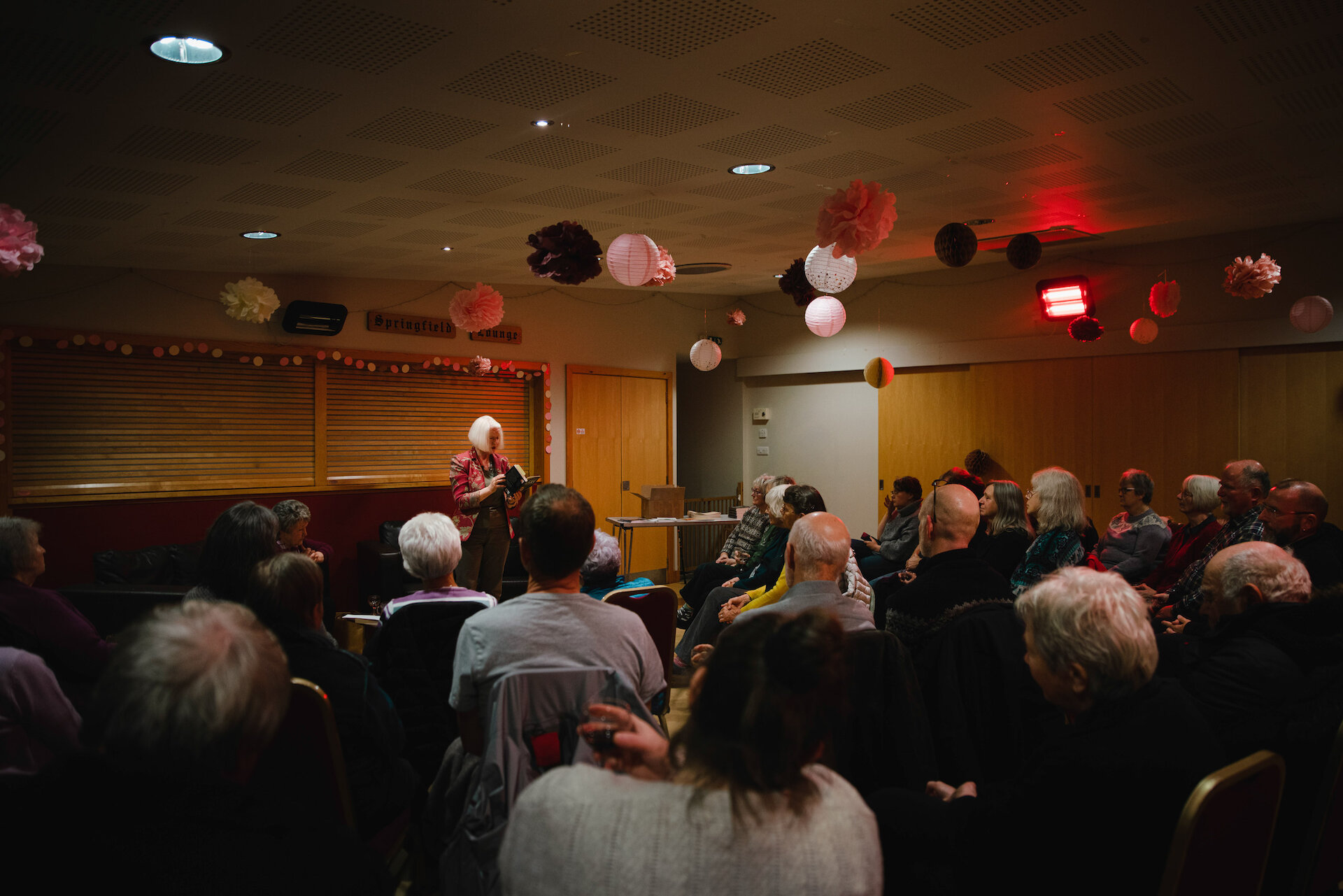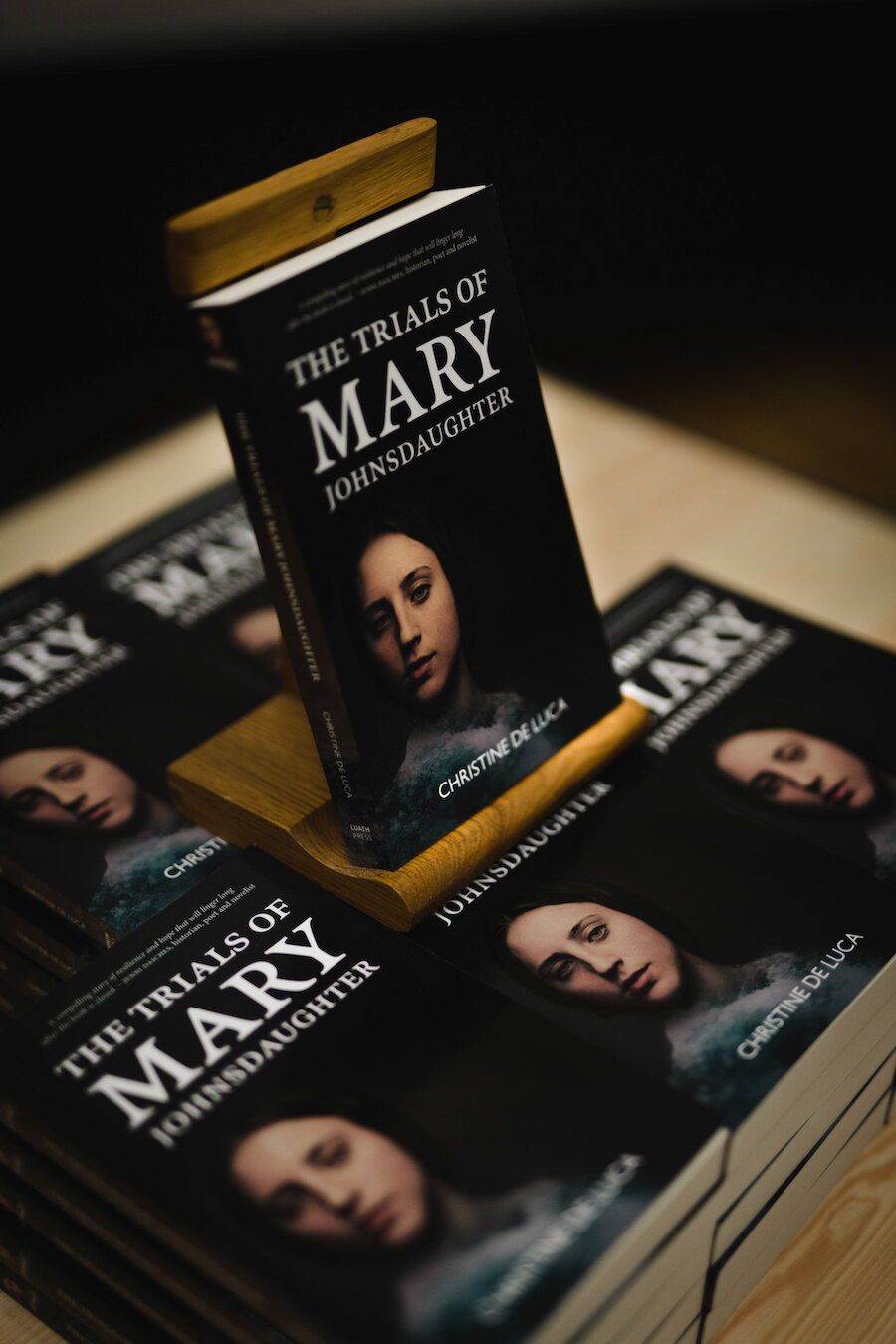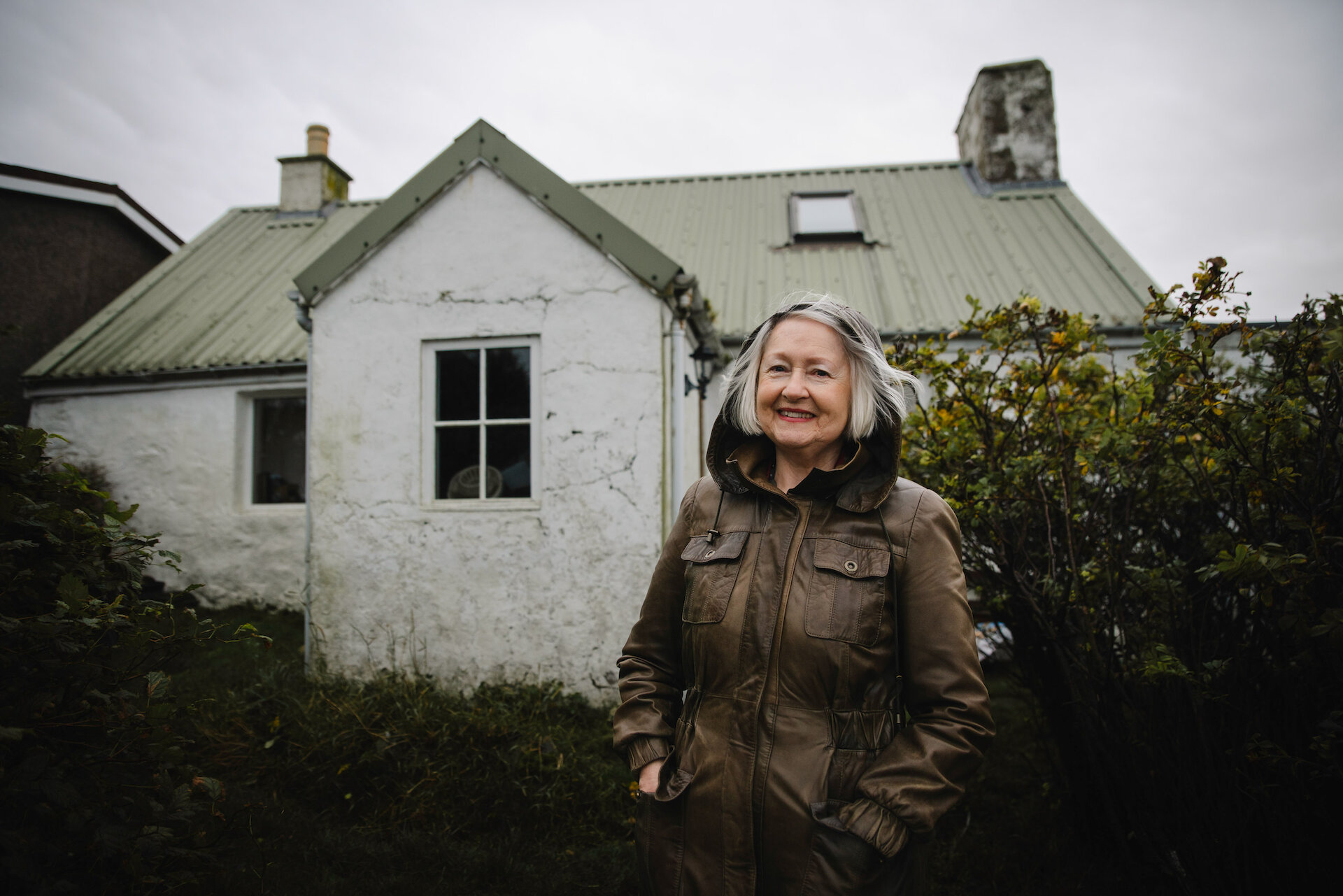A good book will take you on an imaginative journey across space and time, writes Jordan Ogg. The Trials of Mary Johnsdaughter (Birlinn, 2022), the new novel by Christine De Luca, offers a chance to be transported into the bosom of a tight-knit Shetland crofting community in the 1770s as it reckons with a seismic incident.
Shetland dialect writer Christine de Luca's latest work is something of a love letter to Walls, the West Side village she grew up in, turning the clock back to the late 18th century as hundreds of incomers spill ashore into the tiny hamlet.
Based on real events, De Luca’s tale hangs on the classic narrative device of a stranger coming ashore. In this case, however, we meet not just one, but hundreds of unknown people as they spill into the heart of the tiny rural hamlet of Walls (or Waas).
Their fate has been dealt by the wild seas around Shetland’s west coast as their ship The Batchelor is wrecked off the tiny village. Mostly poor Scots, the passengers have already suffered the horror of the Highland Clearances. Now their dreams of finding salvation in the New World have been replaced by fear and uncertainty at what lies ahead.
The drama proceeds with the local folk being concerned for the welfare of the survivors. Then the villagers must face the fact that their ability to help may come at great cost, given their already meagre hand-to-mouth existence.
Eventually the ineffectual local authorities move to ease the pressure. By such time gossip, the real fuel of small village life, has started to burn.
Rumours hatch and grow under the veil of kirk session meetings, an eighteenth century version of a minor but highly influential court, “run by auld men, for auld men”. All talk is about who is sleeping with whom, yet the chatter is far from idle.
The joy of fornication outside of marriage is a serious misdeed, and adultery is a crime nearly as bad as murder. One might ask, what else is a young woman in rural Shetland to do when there is suddenly a score of new men seeking her attention? A fair question for a modern audience perhaps, but not so one of the late eighteenth century.
It would not be oversharing to say this is a major concern when it comes to the novel’s protagonist, Mary Johnsdaughter of the book’s title. A caring and conscientious lass, she spends her better days working at the house of the benevolent local schoolmaster, Mr Greig.
In these moments we gleam some of the most relatable aspects of De Luca’s admirable research. The kitchen scenes introduce us to hufsie, a tasty fruit loaf you can cook for yourself in this recipe from Laurie Goodlad; and ‘curny puddeens’, lamb offal stuffed with a mixture of flour, oatmeal, spice, suet and currants boiled then cut into slices for frying.
The Greig household is home to a revolving cast of fine young men. Some come and go from the Greenland whaling; others are pupils learning scraps of reading and writing when allowed time away from the toil of the home croft.
A leading proponent of Shetland literature and dialect, Christine has published several acclaimed volumes of poetry, and has even translated popular children’s books such as The Gruffalo into the local tongue.
Here we encounter an unexpected challenge of historical accuracy: sticking to true names. At least six of the male characters are called John, or a variant of; a fact thankfully catered for by De Luca with a cast list at the start of the novel.
It is clear that De Luca has deep and extensive knowledge of her subject. A leading proponent of Shetland literature and a champion of the distinctive Shetland dialect (also known as Shetlandic,) she has published several acclaimed volumes of poetry, and has even translated popular children’s books such as The Gruffalo into the local tongue.
The novel opens with a prologue written in Shetlandic, followed by an English translation for those who may feel daunted by the unusual rhythm and flow of the local tongue. It is, however, really worth giving the first piece a go, as it lets you enter the story with a local accent of the imagination.
The effect is not unlike choosing to watch colour TV over black and white. And while it can take a bit of time to get used to at first, once you get going, you soon begin to respond to the Shetland brogue. Ever helpful to her readers, De Luca has provided a glossary of dialect words and phrases to keep the story on track.
While the dialect aspect of the book gives it a homespun feel, it would be a mistake to think De Luca is not interested in big themes. Patriarchy and misogyny dominate the lives of most of the young women we meet. Many of the cast live on the edge of extreme poverty and ruin - facts of life which hang over the fate of the children in particular. If only they could get more time away from the croft to spend in school, they might manage to secure a better future.
Most impressive is the sense of place and community that pervades throughout. De Luca’s book is something of a love letter to her home village of Waas, one we are all invited to read and take into our hearts.
Jordan Ogg
Find out more about Shetland dialect and its Scandinavian roots.



